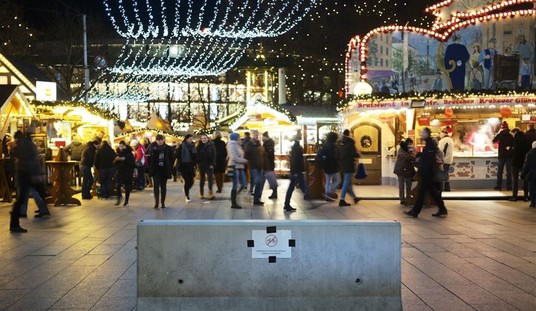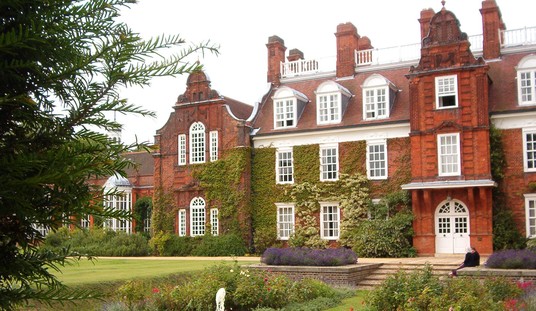Perhaps it’s not a body blow to ISIS itself, but the capture of Salah Abdeslam might do a great deal of damage to its operations in Europe. One question from his capture certainly remains unanswered at the moment — why was the mastermind of the Paris attacks still in Europe at all? And why did he stick around Molenbeek, which Belgian and other Western counterterrorism operatives kept under scrutiny?
Salah Abdeslam, the top suspect in last year’s deadly Paris attacks, was discharged Saturday from a Brussels hospital along with a suspected accomplice and will now face official questioning and a fast-track effort to extradite him to France.
France’s interior minister called Abdeslam’s arrest a “major blow” to the Islamic State of Iraq and Syria, or ISIS, in Europe, but also warned the threat of new attacks remains “extremely high.”
Belgium’s prime minister also said “the fight is not over,” and the Belgian government announced the nation’s terrorism alert level would remain unchanged at 3 on a 4-point scale.
Abdeslam, 26, was shot in the leg and his companion also injured when they were captured by police on Friday. Yvan Mayeur, the Brussels mayor, announced on Twitter that “the two presumed terrorists” had been discharged from CHU St. Pierre hospital Saturday morning.
The assumption after a raid in November missed Abdeslam was that he had returned to Syria and ISIS. Five days later, a Belgian security operation swept across Molenbeek and Brussels, netting 16 suspects, but Abdeslam was nowhere to be found. In fact, the ease in which the Paris mastermind had slipped in and presumably out of Europe highlighted the dangers of a border-free continent while a wave of refugees landed on its shores — and most thought that Abdeslam was back in Raqqa, laughing at the confusion left behind.
Perhaps he did go back to Syria and managed to make his way back, but that seems unlikely. As the Guardian reports, it now appears he went to Molenbeek and never left. That shows that radical Islamist jihadists have a strong network, but it may also show its limitations:
Despite one of Europe’s biggest manhunts following the Paris attacks that killed 130 people, the fugitive had returned to his home turf in Molenbeek, where his parents still live in a well-kept townhouse a stone’s throw from the mayor’s office. He managed to stay hidden in the area, which is viewed by police as a centre of recruitment and planning for jihadi terrorism. …
But Abdeslam’s arrest was also clearly far from the end for the investigation – many more people are being sought and the fact that he remained hidden for so long in Brussels shows the strength of the network there.
He may have stuck behind in Europe in part because he didn’t carry out his full assignment:
Investigators are considering whether he planned to carry out his own suicide attack in the 18th arrondissement of the French capital, and perhaps backed out or failed for technical reasons. The Islamic State communique claiming responsibility for the attacks referred to an attack in the 18th arrondissement that never happened.
Instead, while the Bataclan attacks were under way, Abdeslam bought a phone and sim card in northern Paris from a saleswoman who later said he seemed drugged. He then called two friends in Brussels and asked them to drive to get him saying he was “in the shit”. He then went to a southern suburb in Paris and is believed to have dumped an explosive vest on a pile of rubbish.
Perhaps he defied an order to martyr himself in the attack, or felt that his failure would be seen as that form of cowardice. Had that been the case, though, it seems doubtful that Abdeslam would have had enough support from the jihadist network in Molenbeek to remain hidden for very long. They certainly would not have had others defending him to the death, as happened yesterday. That kind of protection looks more like the network keeping its command safe, as it planned more operations in Europe.
But why do that from Molenbeek? It was the most likely place for Abdeslam to flee, which is why the Belgians kept coming back there to seek him and other jihadists out. It makes much more sense to have everyone fade from view and reappear elsewhere to begin planning other operations. Thanks to the lack of border controls in most of the EU, there are a wide range of options for any terrorists who manage to get into Europe to go. The fact that they stayed stuck in the most obvious place to look suggests that ISIS doesn’t have other options in the EU, at least none for fully operative networks.
So while this isn’t a body blow to ISIS as a terrorist quasi-state, it may cripple their ability to conduct operations in Europe, at least in the short term. Getting Abdeslam alive, as well as some of his henchmen, increases the possibility of unraveling more of the Molenbeek network and perhaps others that it has spawned but were not reliable enough to trust with operational security. That will give the EU time to correct its internal security and to come to grips with the danger its refugee influx has created, but not that much more time.
The Associated Press has raw footage of Abdeslam’s arrest and transport. Hopefully this is one of a series of operations that will roll back ISIS’ international terrorism.








Join the conversation as a VIP Member